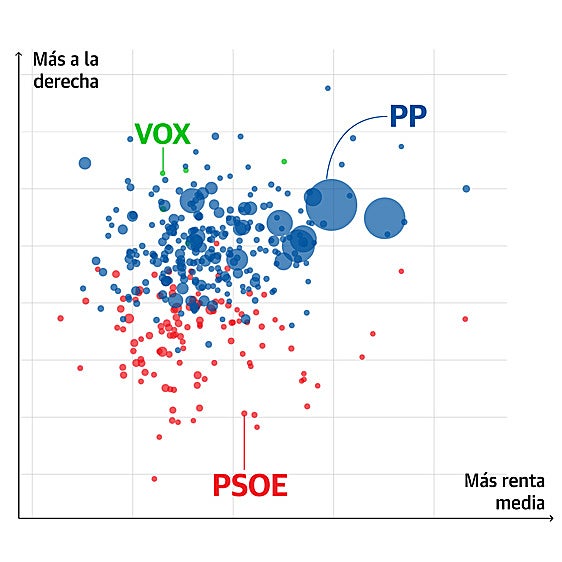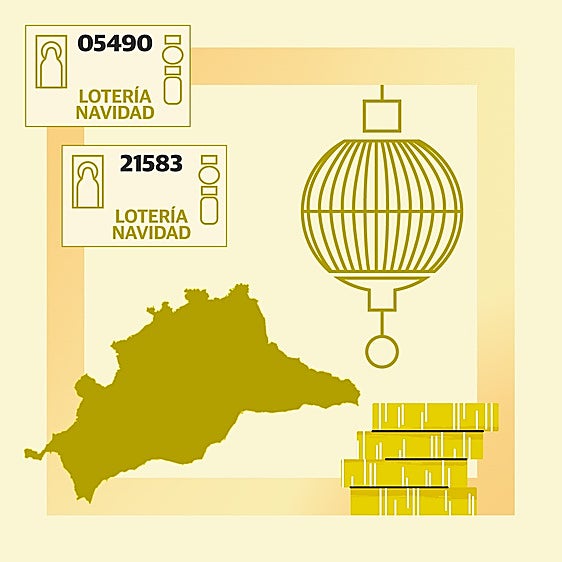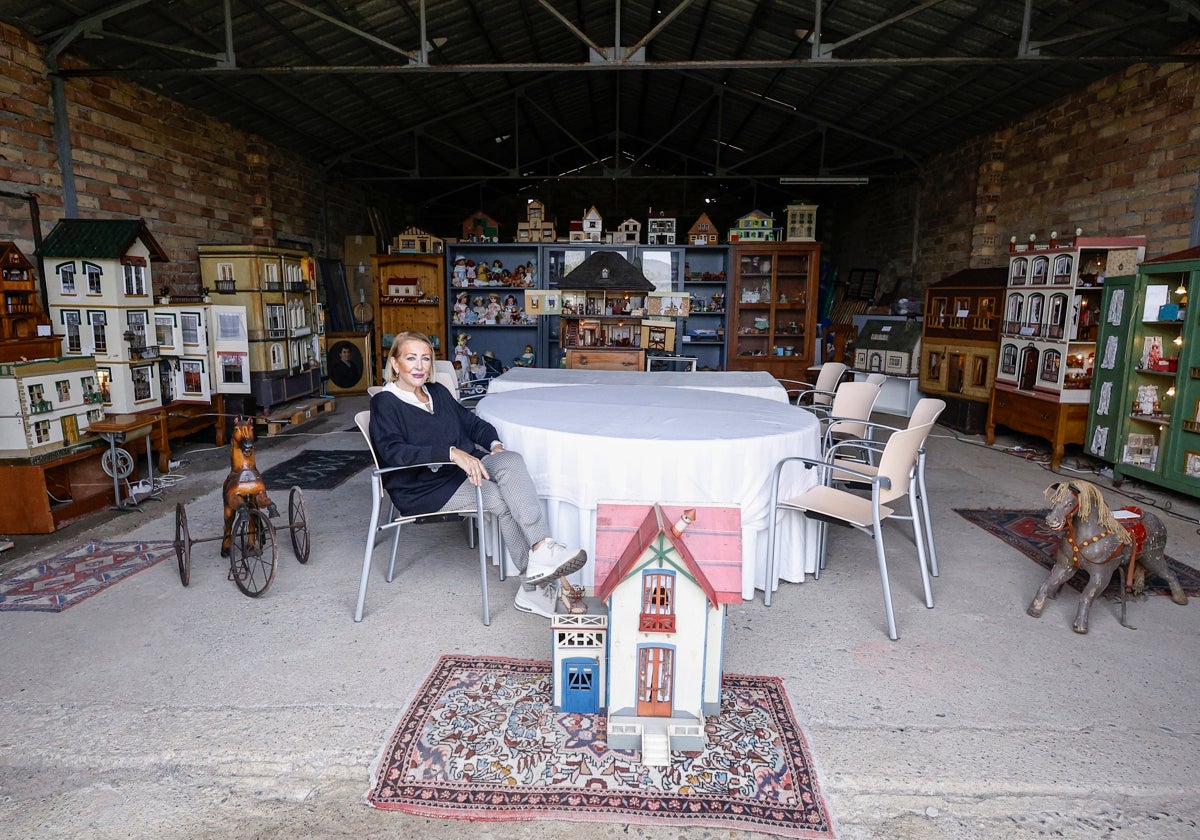Doll’s houses in search of a new home: one of the best collections in Spain that is up for sale for one million euros
Voria Harras is seeking a buyer for her collection that shows life in miniature since the 19th century. They once had their own museum in Malaga but now they are kept in a warehouse
From the outside, it’s just an ordinary barn in the middle of an olive grove, a few minutes from Álora. But inside, there are no tools or remnants of harvests. Instead, when the warehouse lights are switched on, they illuminate the dining room of Villa Dolores, a mansion in Cordoba; the kitchen of a house in Monte de Sancha, Malaga; and the stairs of the Carranza family’s palace in Cadiz. When we leave, the lights go off again, not to be switched on until the next visit, perhaps from a potential buyer.
Voria Harras is selling her collection of doll’s houses, one of the most extensive and remarkable in Spain, to ensure its preserved. “I’m 75 now and I want the collection to last at least another hundred years,” she says, her sadness and resignation evident.
Voria Harras has set the price at one million euros for a lifetime’s work, reflecting the time and money spent over decades collecting nearly fifty houses, along with countless miniatures, toys and dolls and restoring them. It has been a continuous and demanding process, always sourcing materials similar to the originals and aiming to stay true to their history, as she was taught at art school.
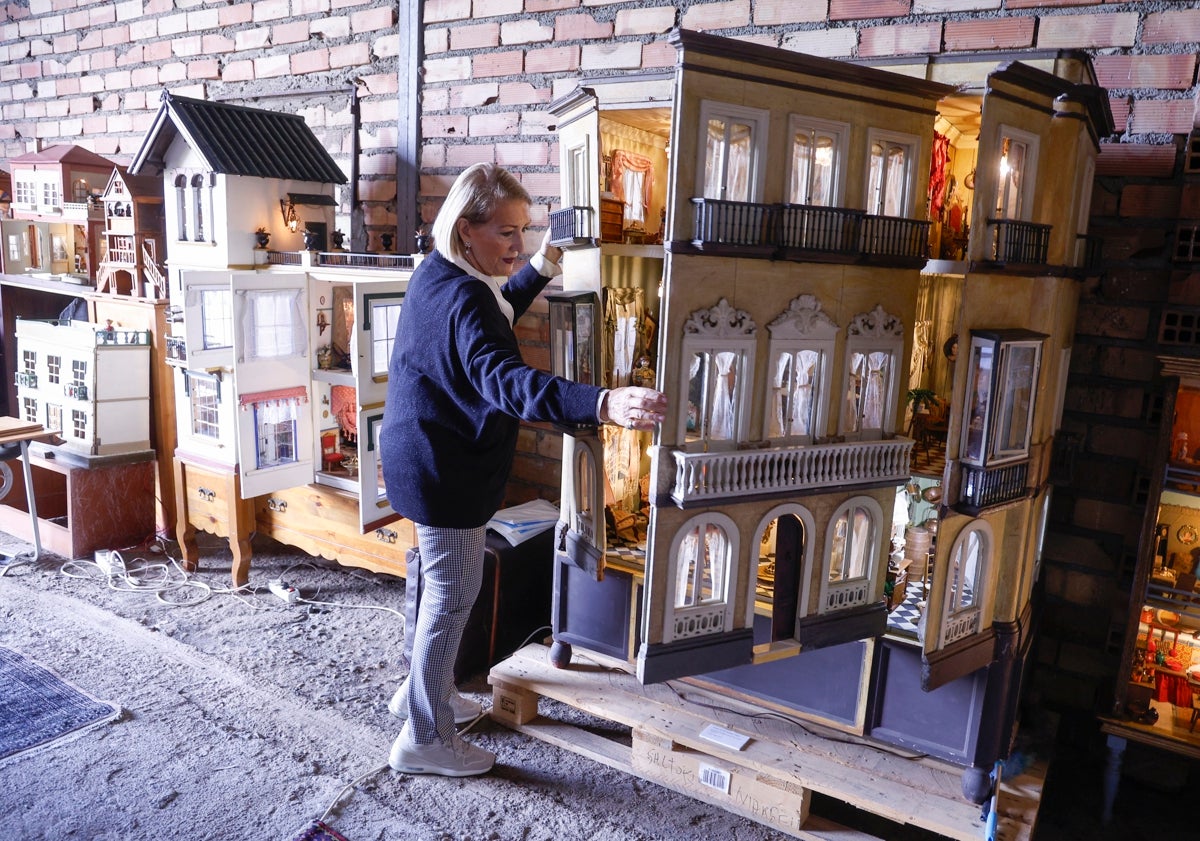
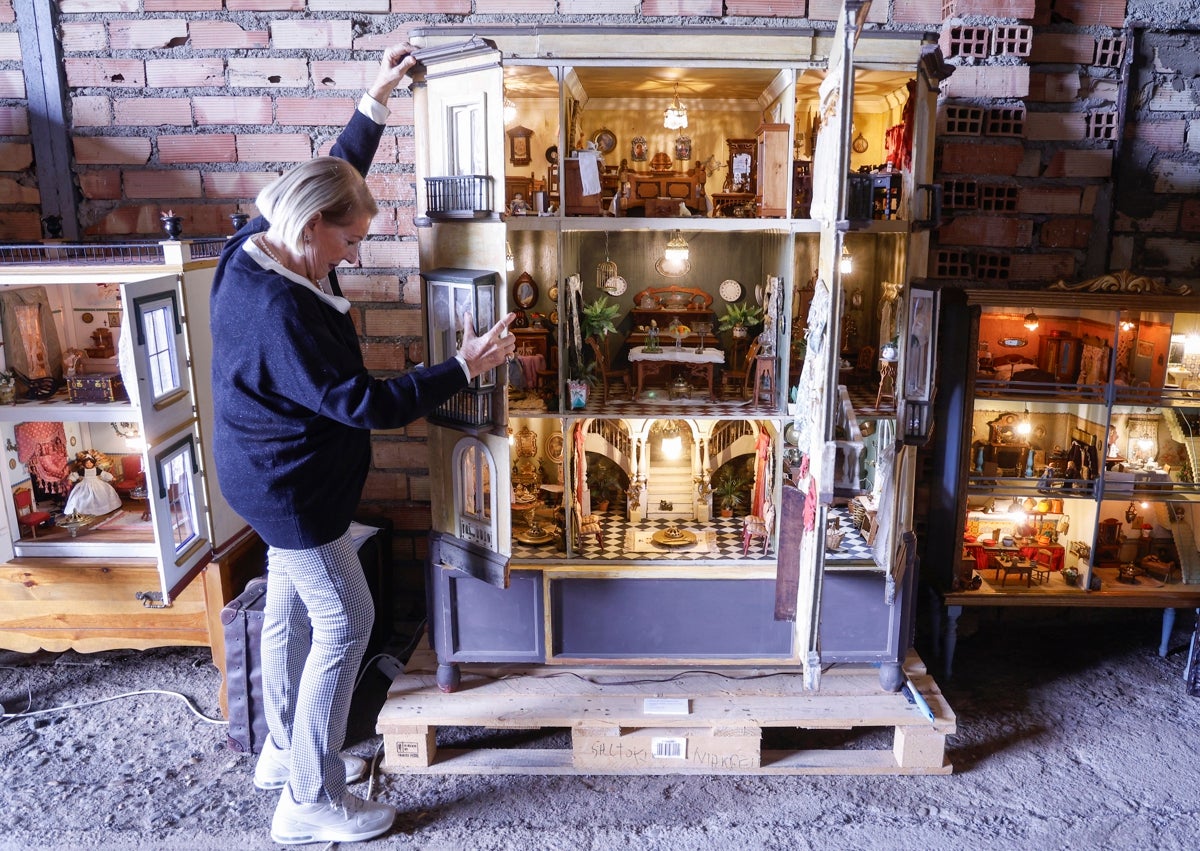
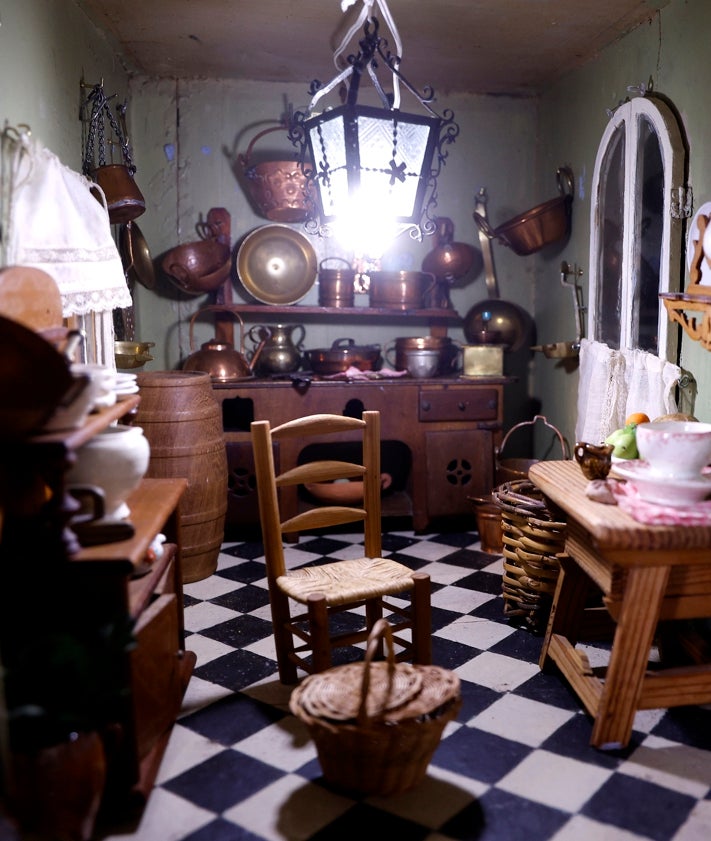
As she often points out, doll’s houses are part of a country’s history. “They weren’t made for playing with; they were miniatures created so owners could see how their house and its interior would look,” she explains. In the 19th century, architects built models of the homes they designed, while cabinetmakers, dressmakers and even porcelain manufacturers produced scaled down versions of their products as display items for clients. Once the family chose a design, it would be made to full size and delivered along with the model, which would then be placed in the doll’s house. In a city with only ten or fifteen prominent families, no one wanted to have the same dining room as their neighbour.
In these replica homes, there are intricately carved wooden chairs, miniature Limoges china, designer sofas and handmade bedding. Harras explains all of this as she rearranges the pieces inside the houses, almost instinctively, taking pleasure in handling and examining them up close once again.
“I often joke that a little mouse has moved in here,” she says as she stands up the felt members of household staff in a typical 1940s Madrid home from the El Viso district, decorated in Art Deco style.
1,000,000 euros is the price Voria Harras has set for her collection, which includes dozens of toys and dolls and houses, some dating back to the 19th century
It’s now four years since these houses have been on display to the public. For a decade, from 2003 to 2013, they had their own museum in an 18th-century building in Calle Álamos, right in the heart of Malaga. But with no financial support, Harras was forced to close it and retired. In the summer of 2018, she unpacked her collection once again and exhibited it for a year and a half, “with a record number of visitors,” she states proudly, at the Benalmádena Exhibition Centre. But since 2020, they have been locked away, waiting for a museum or a local council to take them in.
“And if they can’t buy them, we could arrange a sort of lease with an option for the collection to remain there permanently. What I won’t do is give it away, never,” she says referring to the Andalusian saying that what’s given away is neither appreciated nor paid for. “Things have value even if it’s minimal,” she states.
If a local institution doesn’t take the collection, she will sell it abroad, although she is reluctant to do so. Two American dealers have already seen the collection in person and are gathering material to put it on sale in the US.
“It deeply saddens me that it might leave Spain, but I won’t just leave it locked away in a warehouse - I don’t want that.” She believes it would be valued more overseas. The Art Institute of Chicago, for example, has a dedicated space for miniature rooms and some doll’s houses have sold for millions of dollars in the US.
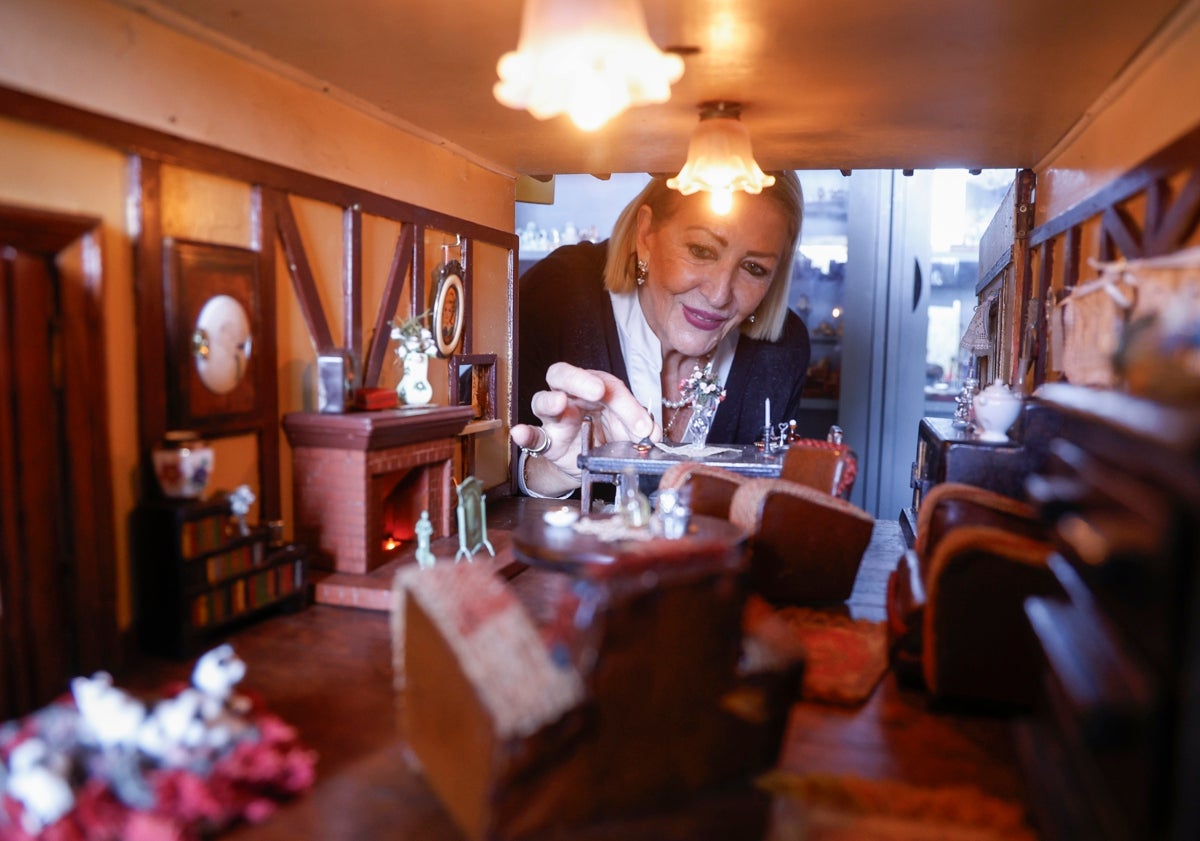
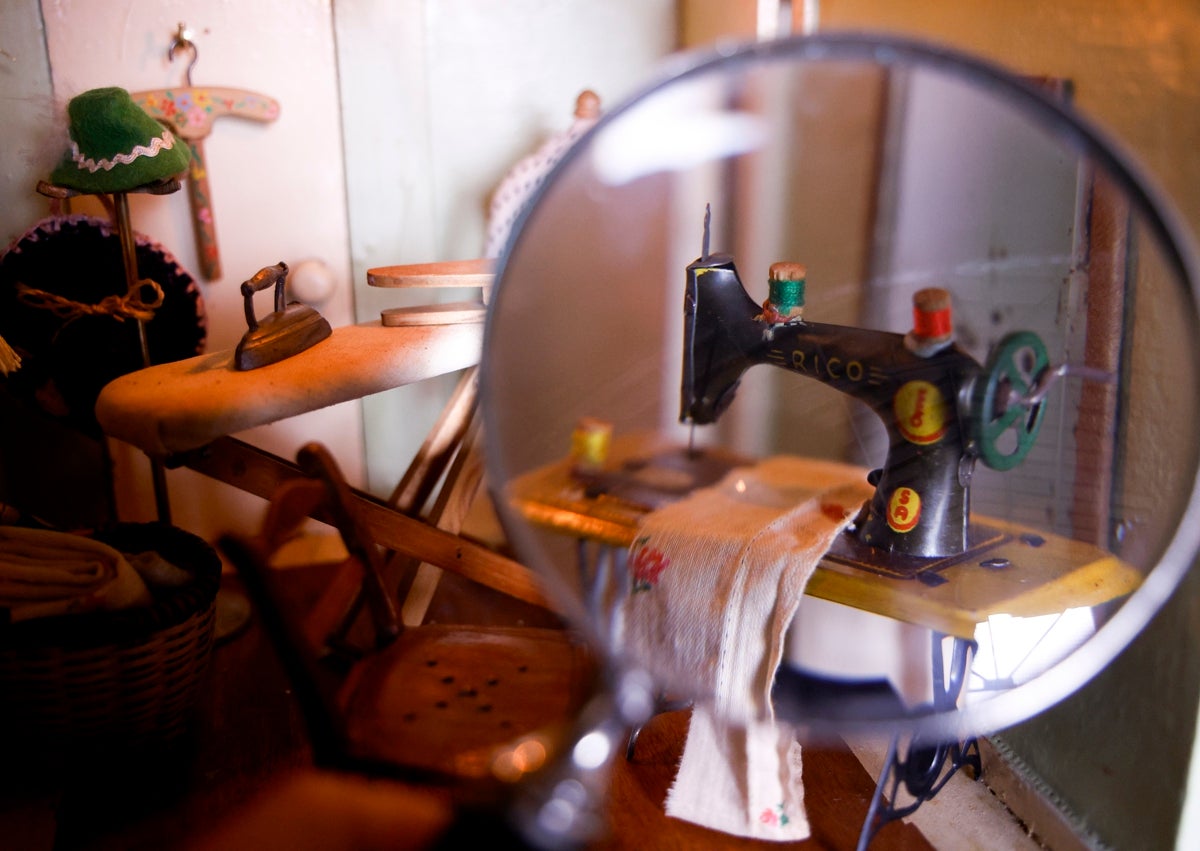
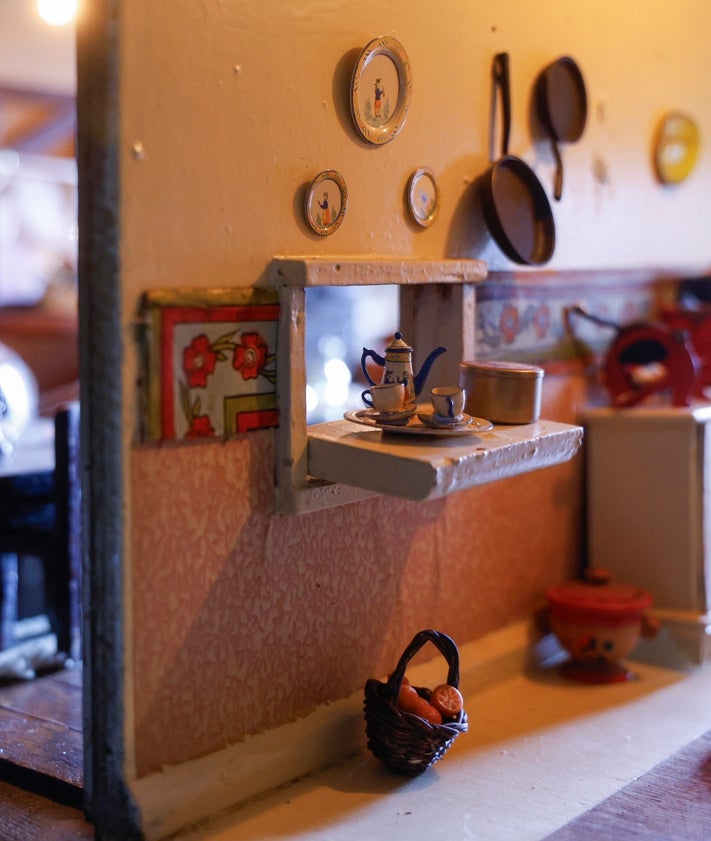
Currently, the collection is in a warehouse, lent to Harras by a friend, and she has arranged the most important doll’s houses in a semi-circle to show them to anyone interested.
“And those who come to see them are truly amazed,” she says. She explains that this is the only way to bring the collection to the market. “Unfortunately, I have to do this because I’m not going to live long enough to open another museum, nor can I afford it. I tried before, but I had to close it and didn’t receive any support. I retired, became a widow and it was a luxury I couldn’t sustain. What I don’t want is for all the effort, money, time, passion and love I’ve invested in these to go to waste,” she adds.
“I have to sell it because I won’t live long enough to open another museum,” says Harras, 75
Every so often, she travels from Malaga to repair a piece, replace light bulbs or simply dust them off. Her wish is for the doll’s houses to be displayed in a museum “where they’ll be looked after, restored and kept safe from moths”.
“I want them to outlive me, even outlive you,” she says as she gestured to those of us in the warehouse with her. “I’d die happy then,” she states.
These houses help future generations see where we’ve come from, “how primitive life used to be - no phones, no bathrooms”. Some of them are almost two centuries old and it’s become a miracle that they survived.
“Anyone interested in history can look at them and see what the economy and society were like at the time; whether there were wars or not,” she explains. She points to a German post-war house, considered at the time the height of luxury for children, even though it was made from very basic materials such as plywood. “I don’t even know how it’s still intact; it’s so delicate,” says Harras.
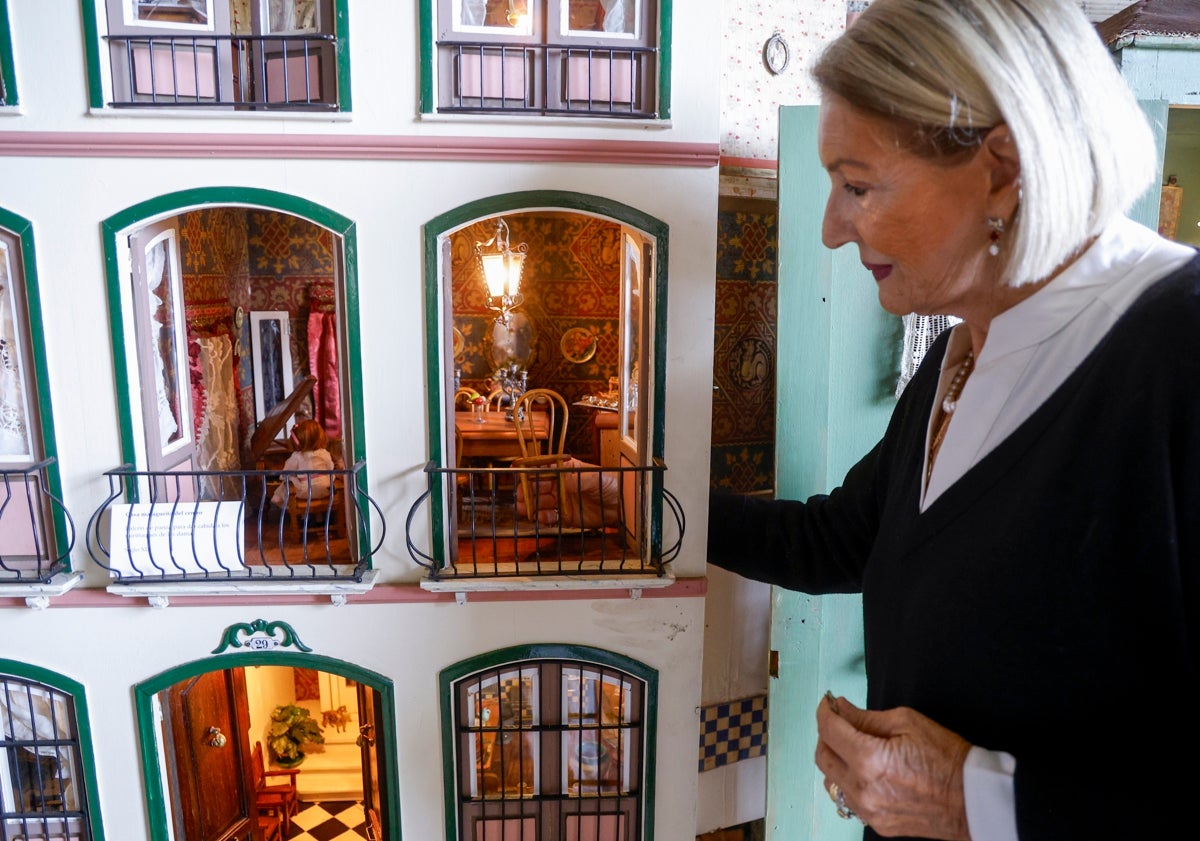
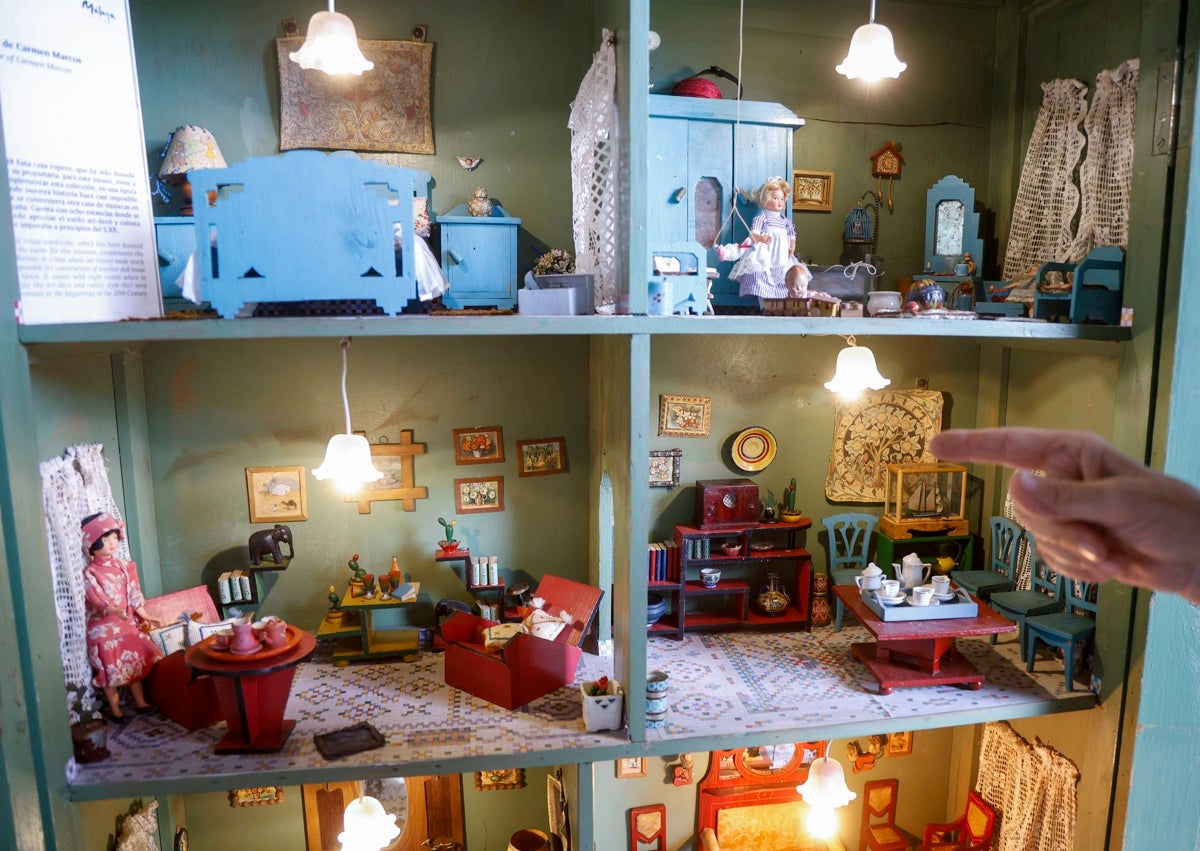
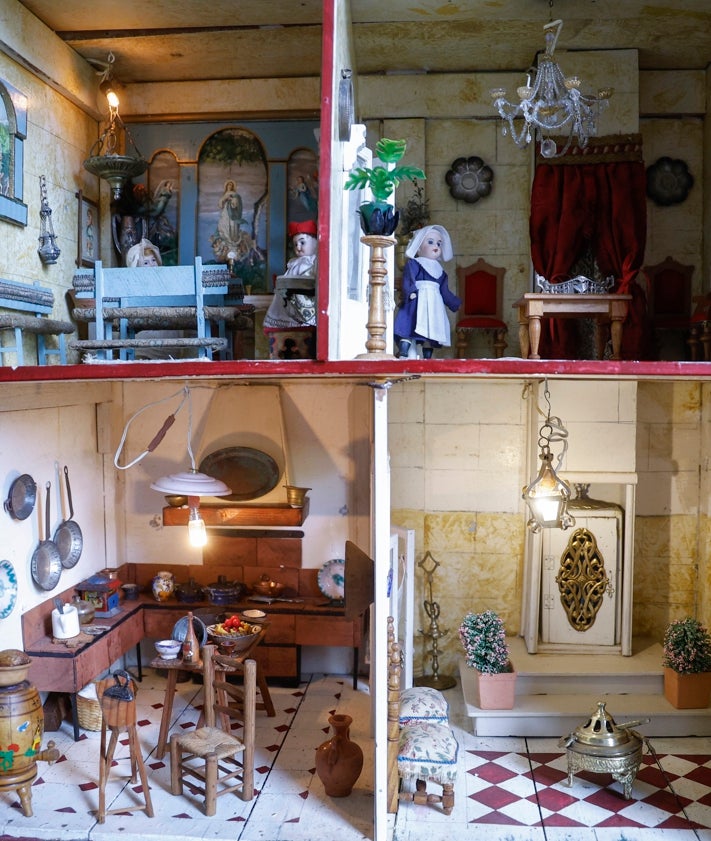
In some cases, the affluence of the houses’ residents is evident. Take, for example, the replica of the 19th-century mansion in the Monte de Sancha area of Malaga city, also known as the Bougainvillea, which still exists today. Inside, there is a crystal radio receiver in the sitting room and one of the first wall-mounted telephones by the entrance. Although there was still no running water at the time, this house had a bathroom with basins used to fill the lady’s bathtub. In other, more modest homes of the period, the bathroom was still located outside.
The highlight of the collection is the Palacio de Carranza, which still stands on Calle Ancha in Cadiz. This 19th-century Isabelline-style mansion contains miniature marble furniture and ivory toys for children.
“These aren’t meant to be played with,” Harras states as she lifts a chair from the grand dining room. “They are models crafted by cabinet makers.”
No detail is overlooked. There is a room where the ladies would gather, a chapel with a baptismal font, paintings on the walls, curtains at the windows, a crystal washbasin in the living room and chandeliers hanging from the ceiling.
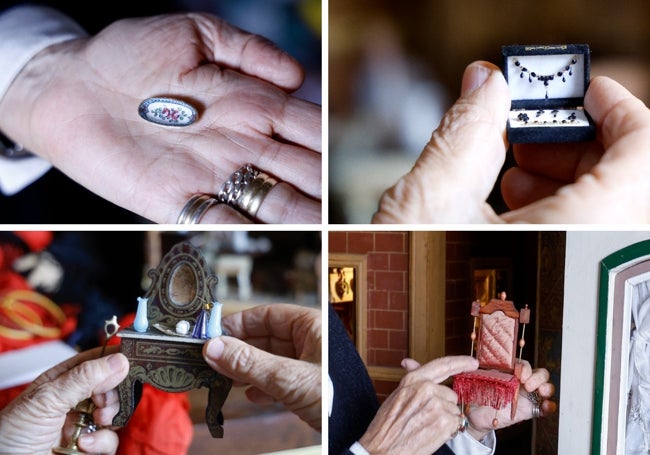
Harras explains that originally, these miniature models were placed in the halls of houses so that guests could see how the family lived without needing to enter the private rooms. Over time, doors opened and it became less unusual to visit someone in their sickbed or children in their bedrooms. The miniatures were then moved from the entrance halls and placed in the playrooms.
Opposite the Carranza palace, Harras lifts the roof and opens the windows of the Tudor House. She peers through one of them. The interior is fascinating. She recalls buying it at a good price because the children had painted it entirely yellow. “But I started scratching it with my nails and the original paint appeared underneath it. The top layer had actually protected it. Just this one is worth a million euros,” she states.
There is a house from Jaén with a “marvellous” stove, originally from Guarromán (Jaén); a typical Malaga house in which she has placed pieces inherited from her grandmother, featuring curved balconies and a summer room on the ground floor to cope with the heat; and a small mansion from Cordoba, Villa Dolores, with a beautiful gazebo on the rooftop terrace. Her collection offers a complete depiction of Andalusian architecture, from the mid-19th century to well into the 20th century.
Over time, these miniature houses became popular with both collectors and children, often displayed in glass cabinets or showcases. One example is a Granada house, which even includes a working lift. As you walk through the warehouse, you can see the evolution of materials, including the introduction of plastic - “which was incredibly expensive, much like buying porcelain today”- and you can almost imagine “the wealthy young girls” playing with their brightly coloured kitchens and living rooms made from this new material. Slowly, modern features were added, including bathrooms with running water, radios, televisions and rotary phones. “I even got as far as the butane gas bottle, and that’s where I drew the line,” jokes Harras.
Her collection, however, continued to grow with toys, dolls and miniatures that were either purchased or gifted, as people knew she would look after them. Among her treasures is a toy Noah’s Ark that once belonged to the Museum of Childhood in London and a rare black Lenci doll, one of the few ever made. It now shares a shelf with dolls from Jumeau and Steiner. The collection also includes medieval and Breton furniture, silver and ivory miniatures from a Russian countess and even a German doll that performs a striptease while singing “I Wanna Be Loved By You”. Indeed ultimately, what all the dolls and houses want is to be loved by someone.
¿Tienes una suscripción? Inicia sesión


